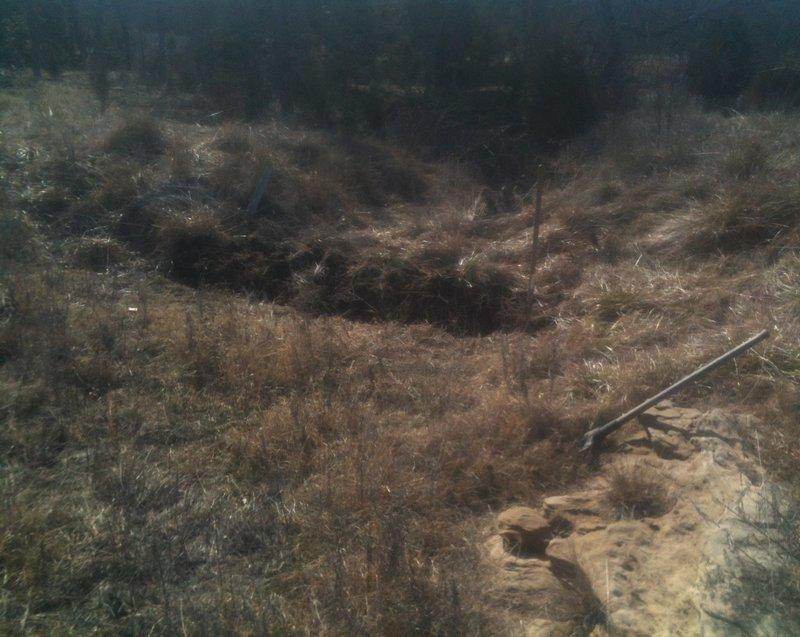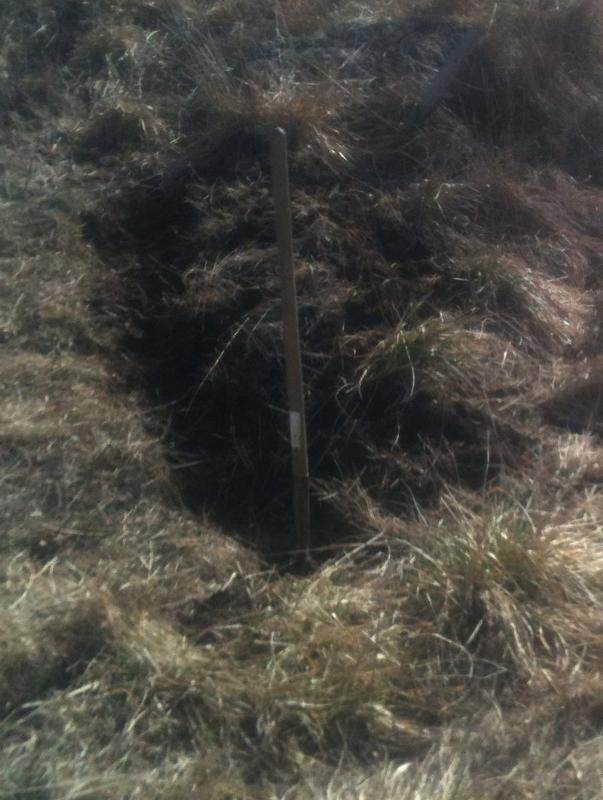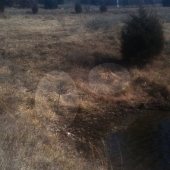
 3
3






Pecan Media: food forestry and forest garden ebooks
Now available: The Native Persimmon (centennial edition)
 2
2








Pecan Media: food forestry and forest garden ebooks
Now available: The Native Persimmon (centennial edition)












Pecan Media: food forestry and forest garden ebooks
Now available: The Native Persimmon (centennial edition)








let's think about keeping it where it is useful to you and not in the bottom of your pond which is a real problem.
This is what I would do as an experiment and it should only cost a few dollars and a couple of hours of your time. I would search for a place where I could drive a short t-post on each side of the gully that is washing out. Since there is rock there, that might be the most difficult part. I would drive the t-post and attach a piece of welded wire fencing across the erosion path, getting it as low to the ground as possible, but your post need to be opposite each other and allow you to erect a fence which will be perpendicular to the flow of the water. If you have rock that you can put behind the fencing (on the uphill side), that would be ideal, but you could also use logs if that is all you have. They won't last forever, but they will last a few years and give you a chance to see if that fixes your problem, and time to collect some rock for a long term solution. You will not be creating a dam, just a gabion to slow down the water flow and catch that soil. The soil becomes another bonus, as you noted when you dug there. If you can keep it there then you will have a great place to grow something desirable as it builds up over time.
You want to hold water in this swale along the entire length of the swale. A swale isn't really shaped like a "U". The bottom of the swale is perfectly flat and in Oklahoma will likely be clay, because you have removed the top soil, and it is part of the mound on the downhill side of the swale. The backside of the swale is not a "U" either, because it needs to be angled gently to let the surface water flow downward into the swale. If not a gradual drop, you will just erode the side of the swale and create a ditch in the process. Forget the mound for a minute and just think about the excavated part.
You have a flat bottom ditch, probably with a clay bottom, with a gentle slope on the high side that is going to allow the surface water to gentle flow downward just as it always did. The difference is that you are catching it and holding the full length of the swale. Pretend again that the mound isn't there. The idea is to let the water that is caught in the swale, slowly infiltrate into the downside of the hill through the wall of the swale. So the water is now soaking in, below surface level, not just flowing over the surface. It will move more slowly going through the soil than it did running over the surface, so you have held and slowed the water flow. Since gravity is in charge here, it is always going to go down.
Now, back to the mound..you have created a mound withe the dirt you removed from the hole you dug, and piled it on the low side of the swale, you have added back the top soil, and left it in a soft mound on the downhill side. Since it has water flowing UNDER it, not through it except for rainfall, it will wick up water and become a perfect place to plant valuable trees that will be well watered.
Pecan Media: food forestry and forest garden ebooks
Now available: The Native Persimmon (centennial edition)




Moderator, Treatment Free Beekeepers group on Facebook.
https://www.facebook.com/groups/treatmentfreebeekeepers/









Pecan Media: food forestry and forest garden ebooks
Now available: The Native Persimmon (centennial edition)




Pecan Media: food forestry and forest garden ebooks
Now available: The Native Persimmon (centennial edition)




Pecan Media: food forestry and forest garden ebooks
Now available: The Native Persimmon (centennial edition)




Moderator, Treatment Free Beekeepers group on Facebook.
https://www.facebook.com/groups/treatmentfreebeekeepers/









Pecan Media: food forestry and forest garden ebooks
Now available: The Native Persimmon (centennial edition)




Moderator, Treatment Free Beekeepers group on Facebook.
https://www.facebook.com/groups/treatmentfreebeekeepers/









Pecan Media: food forestry and forest garden ebooks
Now available: The Native Persimmon (centennial edition)
 1
1




"You must be the change you want to see in the world." "First they ignore you, then they laugh at you, then they fight you, then you win." --Mahatma Gandhi
"Preach the Gospel always, and if necessary, use words." --Francis of Assisi.
"Family farms work when the whole family works the farm." -- Adam Klaus




Pecan Media: food forestry and forest garden ebooks
Now available: The Native Persimmon (centennial edition)
 1
1




Dan Boone wrote:Another thing they don't make like they used to is five gallon plastic buckets; my $2.97 Walmart ones aren't holding up near as well as the ones we used to use to haul gold mining gear that were recycled Chevron lube buckets.
"You must be the change you want to see in the world." "First they ignore you, then they laugh at you, then they fight you, then you win." --Mahatma Gandhi
"Preach the Gospel always, and if necessary, use words." --Francis of Assisi.
"Family farms work when the whole family works the farm." -- Adam Klaus
 1
1








Come join us at SowEdible.com as we build our 100 acre Permaculture homestead.




Pecan Media: food forestry and forest garden ebooks
Now available: The Native Persimmon (centennial edition)

|
Permaculture is a more symbiotic relationship with nature so this tiny ad can be even lazier
Rocket Mass Heater Resources Wiki
https://permies.com/w/rmh-resources
|







